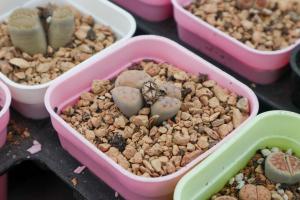Introduction
Many gardeners might wonder if it is alright to plant fruit trees in the fall. While there is certainly no definite answer, there are several reasons why fall is actually a great time to plant fruit trees. In this article, we will take a closer look at the benefits of fall planting, considerations for doing so, and some tips for a successful fall planting experience.
Benefits of Fall Planting
One of the greatest benefits of fall planting is that the soil is still warm, which allows for root growth before the dormant winter season. Trees planted in the fall have several months to establish their roots before they are hit with the stress of summer heat. Additionally, fall planting typically ensures better availability of trees because nurseries often have a greater selection in stock, since many gardeners wait to purchase trees until the spring.
Considerations for Fall Planting
Before deciding to plant fruit trees in the fall, there are several considerations to take into account. Firstly, make sure that the tree you are planting is appropriate for your climate zone, soil type and sunlight levels. You should also check that the soil has the appropriate pH level, drainage and is free of pests and pathogens. If you have recently overturned an unused area of your garden for planting, be sure to till the soil and remove any rocks or large roots. Finally, be sure to water your tree regularly throughout the fall and into winter, as young trees are highly susceptible to dying of dehydration without sufficient moisture.
Tips for a Successful Fall Planting Experience
Successful fall planting of fruit trees starts with locating the best planting site. Most fruit trees require at least six hours of direct sunlight daily, and well-draining soil. Site preparation should include digging a hole that is two to three times wider than the tree’s root ball and deep enough to allow for the topsoil to cover the uppermost roots. Before planting the tree, remove all labels, tags and other materials that may be on the plant.
When filling in the dirt around the tree, aim for an even line with the major roots of the tree at the surface level. Make sure that the soil is well-compacted around the roots to eliminate air pockets, and water thoroughly. It is also recommended to apply a layer of mulch around the base of the plant to help retain moisture, protect the root system, and keep weeds at bay.
Conclusion
Planting fruit trees in the fall can be a rewarding experience, and with proper preparation and care, your tree can flourish into a thriving addition to your garden. As always, be sure to do your research, follow proper planting techniques, and pay attention to your tree's growth so you can ensure the most successful planting season possible.

 how many times do yo...
how many times do yo... how many planted tre...
how many planted tre... how many pine trees ...
how many pine trees ... how many pecan trees...
how many pecan trees... how many plants comp...
how many plants comp... how many plants can ...
how many plants can ... how many plants and ...
how many plants and ... how many pepper plan...
how many pepper plan...































